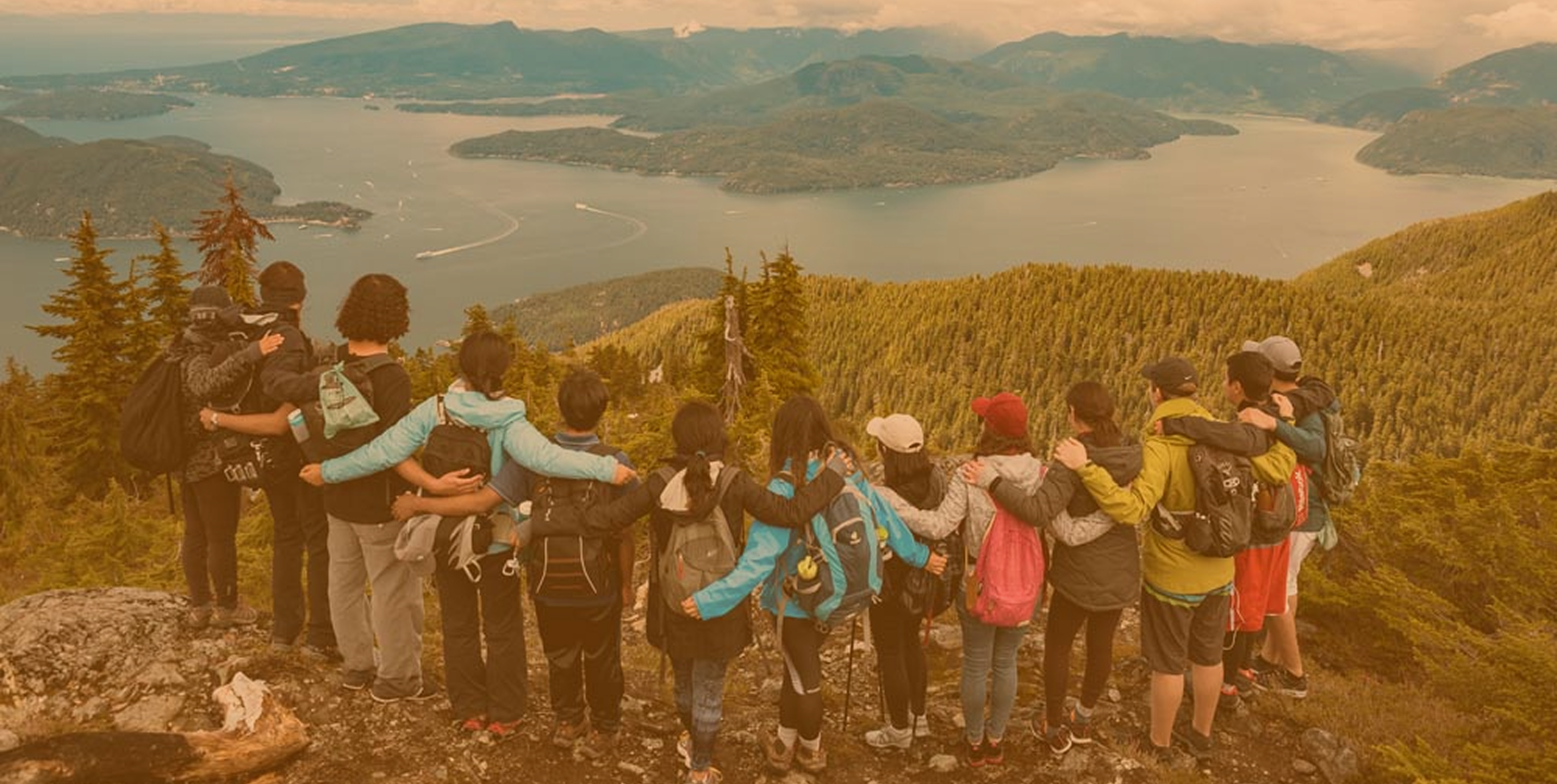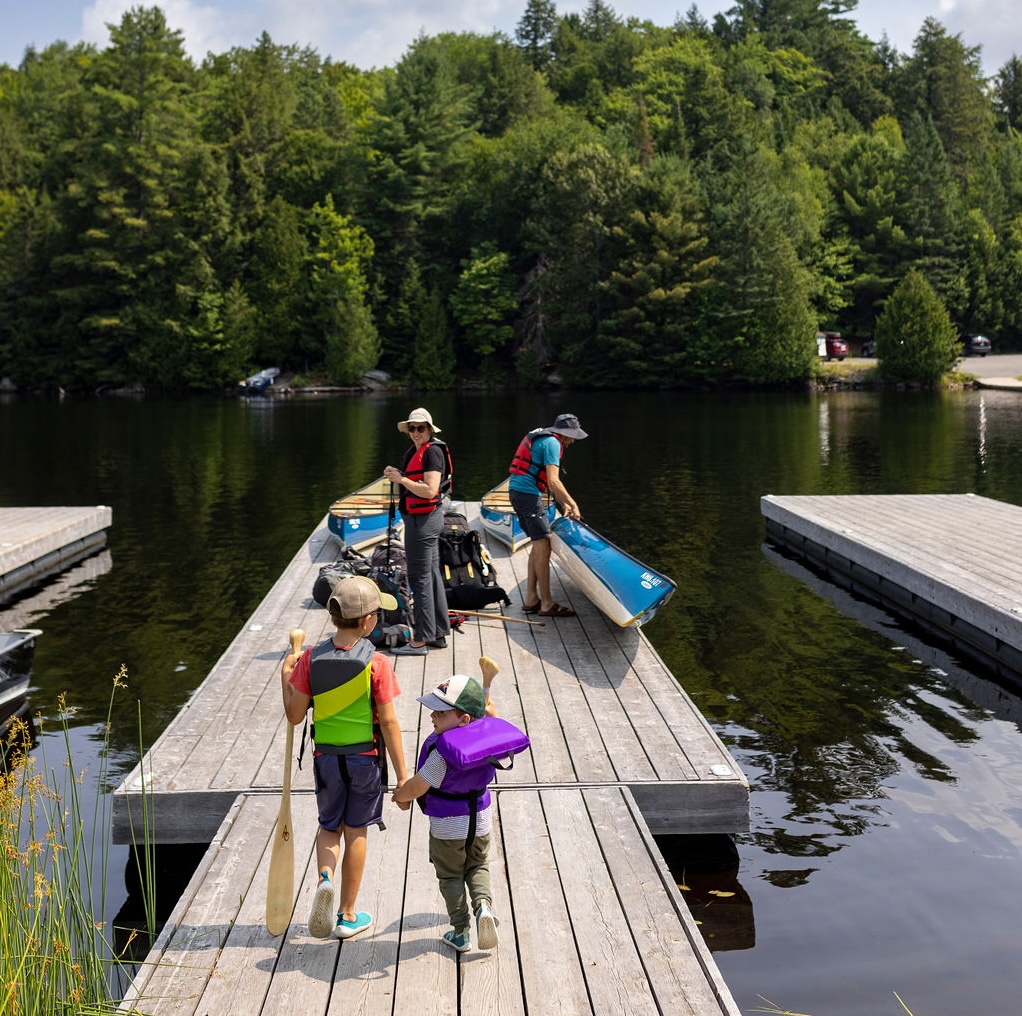
Honouring Truth, Committing to Reconciliation
Today is the National Day for Truth and Reconciliation, also known as Orange Shirt Day, a day dedicated to honouring the survivors of residential schools, remembering the children who never came home, and recognizing the ongoing intergenerational trauma experienced by Indigenous peoples across Canada.
Orange Shirt Day takes its name from Phyllis Webstad (Stswecem'c Xgat'tem First Nation), who had her new orange shirt taken away on her first day at residential school in 1973. Her story symbolizes how the residential school system stripped Indigenous children of their identity, culture, and sense of belonging. Today, we wear orange to show our commitment to ensuring that every child matters.
Our Commitment to Truth and Reconciliation
The Parkbus office is situated on the traditional territory of many nations including the Mississaugas of the Credit, the Anishnabeg, the Chippewa, the Haudenosaunee and the Wendat peoples and is now home to many diverse First Nations, Inuit and Métis peoples. We also acknowledge that Toronto is covered by Treaty 13 signed with the Mississaugas of the Credit, and the Williams Treaties signed with multiple Mississaugas and Chippewa bands.
Every Parkbus trip operates on Indigenous lands across the country. These territories have been cared for by Indigenous peoples since time immemorial, and we have a responsibility to honour that stewardship and the treaties that allow us to share these spaces today.
Ways to Take Action
Truth and reconciliation require more than reflection—they require action. Here are meaningful ways you can contribute:
Learn and Educate Yourself:
- Read the Truth and Reconciliation Commission's 94 Calls to Action
- Review ReconciliACTION reports to see how organizations are implementing the TRC's calls
- Learn about the history of residential schools and their lasting impacts
- Use resources like Native-Land.ca to learn whose traditional territories you live and travel on
Support Indigenous Communities:
- Seek out and support Indigenous-owned businesses and tour operators
- Attend Indigenous-led cultural events and educational programs in the parks you visit
- Listen to and amplify Indigenous voices on environmental stewardship and land management
- Respect sacred sites and cultural protocols when visiting Indigenous territories
Practice Respectful Travel:
- Learn about the Indigenous history and culture of the places you visit before you go
- Follow Leave No Trace principles to honour the land as Indigenous peoples have for millennia
- When visiting parks with Indigenous heritage sites, take time to understand their significance
- Consider how your presence impacts Indigenous communities and sacred spaces
Indigenous Territories Where Parkbus Travels
Understanding whose land we're on is the first step in meaningful reconciliation. Below, you'll find information about the Indigenous territories where each of our Parkbus destinations is located.
Atlantic Canada
Kejimkujik National Park (Nova Scotia)
Kejimkujik National Park is located in Mi'kma'ki, the ancestral and unceded territory of the Mi'kmaq People. The Mi'kmaq have lived in harmony with this land for more than 10,000 years, and their deep connection to Kejimkujik is evident throughout the park.
The name "Kejimkujik" comes from the Mi'kmaw word "Kejimkuji'jk," meaning "tired muscles" or "swollen waters," reflecting the portaging routes used for generations. Throughout the park, you'll find petroglyphs—sacred rock carvings created by Mi'kmaq ancestors—that tell stories of the people, animals, and spiritual beings important to Mi'kmaq culture.
Today, Kejimkujik continues to be a significant cultural landscape for the Mi'kmaq, and the park works in partnership with Mi'kmaq communities to protect and interpret this special place. We encourage visitors to take time to learn about and respect the Mi'kmaq heritage throughout the park.
Learn more about Mi'kma'ki territory
British Columbia
Visit this interactive map to see what lands Joffre Lakes, Garibaldi and Golden Ears Provincial Parks lay on.
Joffre Lakes Provincial Park
Located in the traditional territory of the Lil'wat Nation (Líl̓wat7úl)
Garibaldi Provincial Park
Located in the traditional territory of the Squamish Nation (Sḵwx̱wú7mesh)
Golden Ears Provincial Park
Located in the traditional territories of the Katzie and Kwantlen First Nations
Alberta
Elk Island National Park
The land in and around Elk Island National Park is located within Treaty 6 Territory, the ancestral and traditional territories of the Niitsítpiis-stahkoii ᖹᐟᒧᐧᐨᑯᐧ ᓴᐦᖾᐟ (Blackfoot / Niitsítapi ᖹᐟᒧᐧᒣᑯ), ᓀᐦᐃᔭᐤ ᐊᐢᑭᕀ Nêhiyaw-Askiy (Plains Cree), Michif Piyii (Métis), and Cree peoples.
Visit this interactive map to learn more about the lands you live on every day.
Ontario
Bruce Peninsula National Park and Tobermory
Territory of the Anishinabek Nation: The People of the Three Fires known as Ojibway, Odawa, and Pottawatomie Nations. And further, the Chippewas of Saugeen and the Chippewas of Nawash, known collectively as the Saugeen Ojibway Nation.
Source
Algonquin Provincial Park
Located on the traditional lands of the diverse Algonquin nations.
Source
Rouge National Urban Park
Territory of the Mississaugas of the Credit First Nation, the Anishinabewaki ᐊᓂᔑᓈᐯᐗᑭ, Haudenosaunee, and Wendake-Nionwentsïo, in the Mississauga Territory.
Source - Native-Land map
Elora (Centre Wellington)
The Township of Centre Wellington has been home to people for more than 13,000 years. The land was negotiated as part of Treaty 3 (1784) and Treaty 19 (1818), signed by the Mississaugas of the Credit First Nation. Additionally, most of the Township is within lands originally set aside for the people of the Six Nations of the Grand River under the Haldimand Proclamation of 1784. The Township is within the traditional lands of the Attawandaron (Neutral Nation), the Huron-Wendat Nation, and the Grand River Métis Council.
Source
Albion Hills and Glen Haffy
Treaty Lands and Territory of the Mississaugas of the Credit First Nation. Hosted on the traditional territory of the Anishinaabe, the Haudenosaunee Confederacy and the Wendat. This land remains home to many First Nations, Métis and Inuit peoples from across Turtle Island.
Source
Rattlesnake Point and Crawford Lake
The Treaty Lands of the Mississaugas of the Credit First Nation as well as the Traditional Territory of the Haudenosaunee, Huron-Wendat and Anishinabek.
Source
Moving Forward Together
As we travel through these beautiful landscapes, let's remember that we are guests on Indigenous lands. For the team at Parkbus, reconciliation is not a one-day commitment, it's an ongoing journey that requires continuous learning, listening, and action.
We invite all members of the Parkbus community to join us in honouring Indigenous peoples not just today, but every day we have the privilege of experiencing the lands they have protected since time immemorial.
For more information about the National Day for Truth and Reconciliation, visit canada.ca/truth-reconciliation
Want Deals and First Access to New Trips?
Subscribe to stay updated.

More to Read. More to Explore.
Find more trip ideas, travel tips, and outdoor inspiration.



.jpg)







